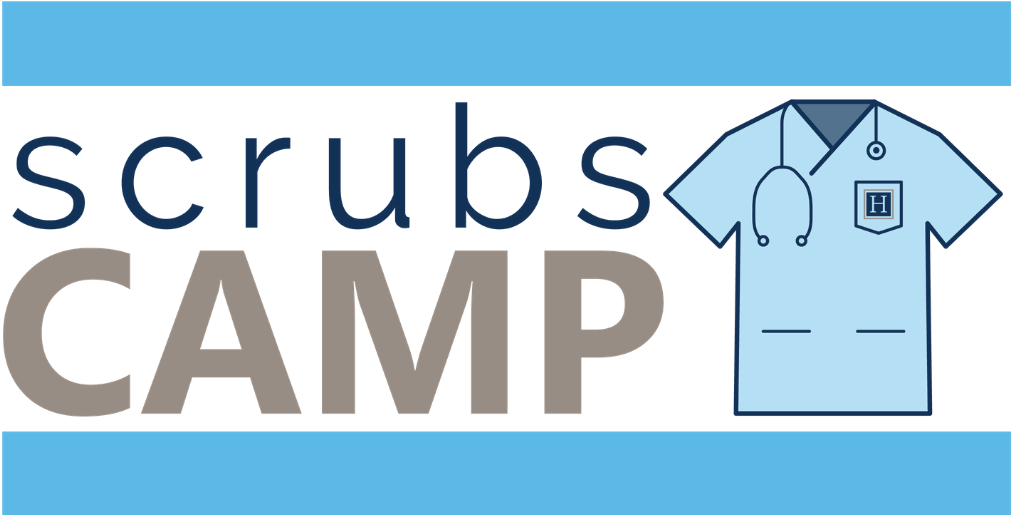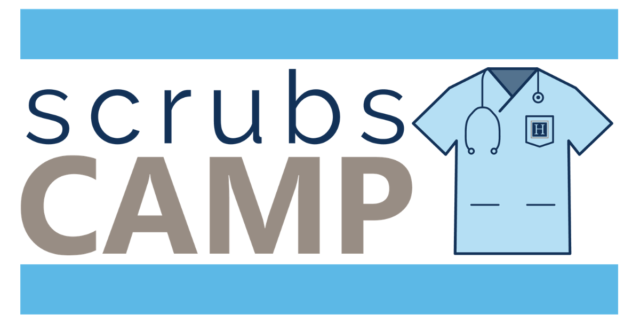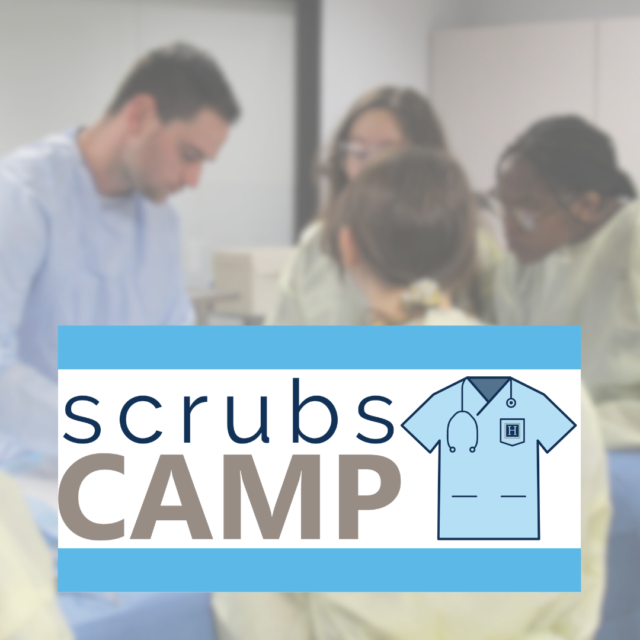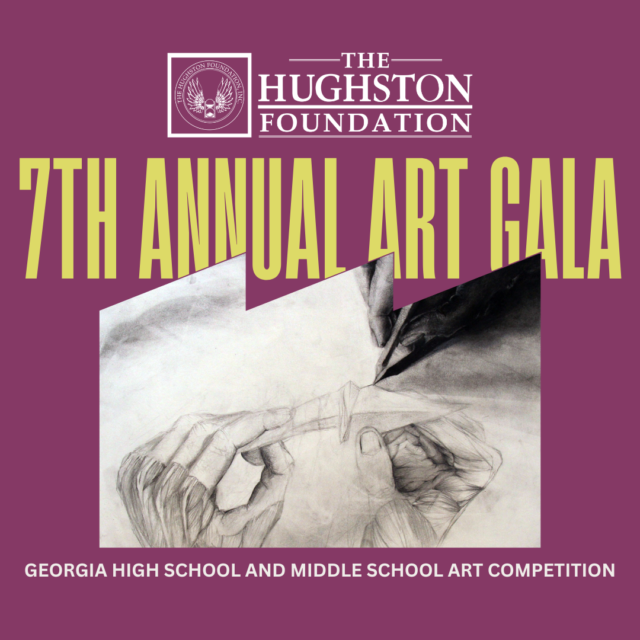What We Offer
STEAM at the Hughston Foundation
Would your school or class be interested in visiting the Hughston Foundation for a day of STEAM (Science, Technology, Engineering, Art, and Math) activities? The Foundation specifically developed a STEAM program, geared towards medicine, for children in the 5th – 8th grades. This program works well for under 50 students at a time accompanied by a teacher(s) and school counselor(s).
After an introduction and welcome in the auditorium, the students are divided into 5 groups and then the groups rotated every one-hour to 30 minutes, depending on time, so everyone had a chance to experience each activity.
Examples of the STEAM stations include:
In the Science lab, a discussion on how chemical reactions change when 2 or more substances are mixed together. For example, the students mix vinegar and baking soda in small water bottles and watched the chemical reaction blow up balloons. A demonstration on how chemistry could be used medically can also be shown. A cast can be applied using materials that are soft and pliable, but once the chemicals are applied, the cast becomes hard.
In our Surgical Education Center a demonstration on how Technology is used in the operating room. The students may practiced on a knee model using our arthroscopy equipment to perform surgery. The goal being to locate and then remove popcorn kernels simulating “loose bodies” from within the knee joint. The students may also practice using an ArthroboxTM, an arthroscopy-training tool, which uses a computer, a plastic box with portals, and specialized instruments to help with hand-eye coordination needed to perform arthroscopic surgery.
As part of the Engineering lab the students are taught about concussions. After a brief discussion, the students are given a boiled egg, which represents the brain and skull. The students are asked to design a way to protect the egg, from a concussion, from recyclable materials and then put it to the test. With their egg protected, the first dropped is at shoulder height. If their egg and apparatus survived, they dropped it off the balcony to the floor below. In the past, many of the students have successfully created devices that have survived both drops.
In the Art lab, a medical illustrator demonstrates drawing techniques as the students sketch along with the illustrator some bones and full skeleton. Plastic models and a skeleton are on display as the students learned to break down a complex object into simple shapes and the proportions of the human body. A discussion about the different bones, where they are located in the body, and a brief description of what a medical illustrator does as a career. After they finished, their drawings they are often hung for display and students are welcome to take them home.
In the Math lab, students are taught how numbers and math are used in medicine. The students learn some of the important numbers that doctors use to measure your health, such as your height, weight, blood pressure, and pulse rate. Students are given a clipboard, pencil, and chart to measure and record their vitals. They can also be involved by taking and recording each other’s eye exam results.
Testimonial —
Thank you so much for the wonderful experience you provided our Brookstone Anatomy students at our recent visit to your facility. They are still talking about all they were able to see and do. From the knee surgery video to the dry lab "practice", to the hands on activities with the suturing and knee dissection, everything was awe inspiring. The attention and helpfulness of you and your staff is much appreciated. We look forward to future visits.
— Brookstone School
Thank you so much for having us! The students had an awesome experience. They especially liked the casting, suturing, and splinting activities. We appreciate all your staff did to make this an awesome experience. Some students have a new found interest in an area they hadn’t considered, and others saw things they hadn’t expected in those they were interested in. Thank you all again for all you did, you all went above and beyond!
— Sonoraville High School
Hands on Adventure in Healthcare

Do you know a high school or college student interested in learning more about the medical field? During Scrubs Camp, students will enjoy lab demonstrations, facility tours, surgical videos, and hand-on activities. Speakers and topics covered during camp include medical writing and illustration, radiology, surgical nursing and technologist, physician and residency program, physical and occupational therapy, athletic training, optometry, and a number of other medical professions. Our camps have been so successful, we are offering it twice again this year.
Scrubs Camp sponsorships are available. The camp is offered twice, giving 96 students the opportunity to participate. Unfortunately, not every student who wants to attend can afford the tuition. We are requesting your help to give a student (and possibly a future healthcare provider) a chance to attend. You can make a difference by sponsoring a student to attend the camp for $225. Every gift matters, however, so any amount will help us continue our mission. Please contact the Hughston Foundation’s Executive Director, Belinda Klein at bklein@hughston.com for more details about the camp or to support our valuable program.
Scrubs Camp Testimonials —
I just wanted to drop you a line to tell you how incredible the Scrubs Camp experience was for my daughter. Every afternoon she was so excited about the activities of the day and was eagerly awaiting what the next day had in store! The experience was life changing for her! Your 3 day event has been a catalyst, instilling strong aspirations and the determination to succeed in getting to and getting through medical school. I can’t thank you enough for the wonderful program!!!
— Parent of Scrubs Camp Attendee
My daughter is still talking about this camp! She is so eager to jump into college & medical school then pursue her career in the medical field. Thank you!
— Parent of Scrubs Camp Attendee
My son loved his experience and now he is especially excited about being in the medical field.
— Parent of Scrubs Camp Attendee
Hands-On Experience
Surgical Education Center
Are you interested in having a customizable educational student experience? The Hughston Foundation will work with you to create an age appropriate agenda for your students based upon their interests and what they currently learning.
The Surgical Education Center has several options that students are able to engage depending on the number and budget. For the price of cadaver specimen, the primary purpose of a dissection session is to help students reinforce and extend their knowledge of anatomy through demonstration and hands-on experience. Depending on the number of students, students can be divided into groups so students get the most out of the experience. A review of relevant anatomy can presented before proceeding to the Center’s lab to dissect a cadaveric specimen. Students may also try their hand at arthroscopic knee surgery on simulators in the Center’s lab.
Testimonial —
"Thank you so much for the fabulous experience yesterday. My students thoroughly enjoyed both the hands on experiences in the dry lab, suturing, and construction activities. They also were mesmerized with Dr. Gudger explaining the knee replacement on video. We are truly grateful that we have such a facility in Columbus."
— Brookstone School Anatomy Class
"What a great opportunity for the students!"
— Andrea Fredrick, Central High School teacher

The Hughston Foundation Art Gala for the Biologically Inclined is perfect for students who would like to unmask the exciting world of art and science. This biological and medically inspired art contest encourages students to create artwork while integrating the principle areas of the national STEAM initiative (Science, Technology, Engineering, the Arts, and Mathematics).
Mission
The Hughston Foundation Art Gala for the Biologically Inclined was created to support the national STEAM initiative (Science, Technology, Engineering, the Arts, and Math), The Hughston Foundation Art Gala helps students learn by integrating these principle areas. The fields of biological and medical illustration, collectively known as scientific illustration, use artwork as visual tools of communication solely for the service of education. The production of illustrations of measured accuracy, conceptualized illustrations, and animations are created to enable communication between scientist and author, teacher and student, or physician and patient. Because they communicate subtleties and eliminate ambiguities of language, scientific illustrations are an important, often necessary, element in precise communication in scientific education.


